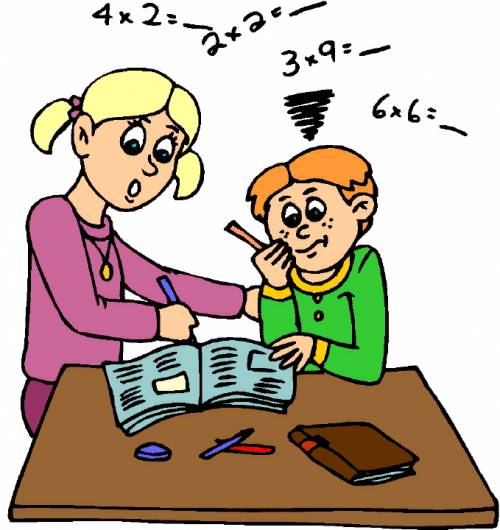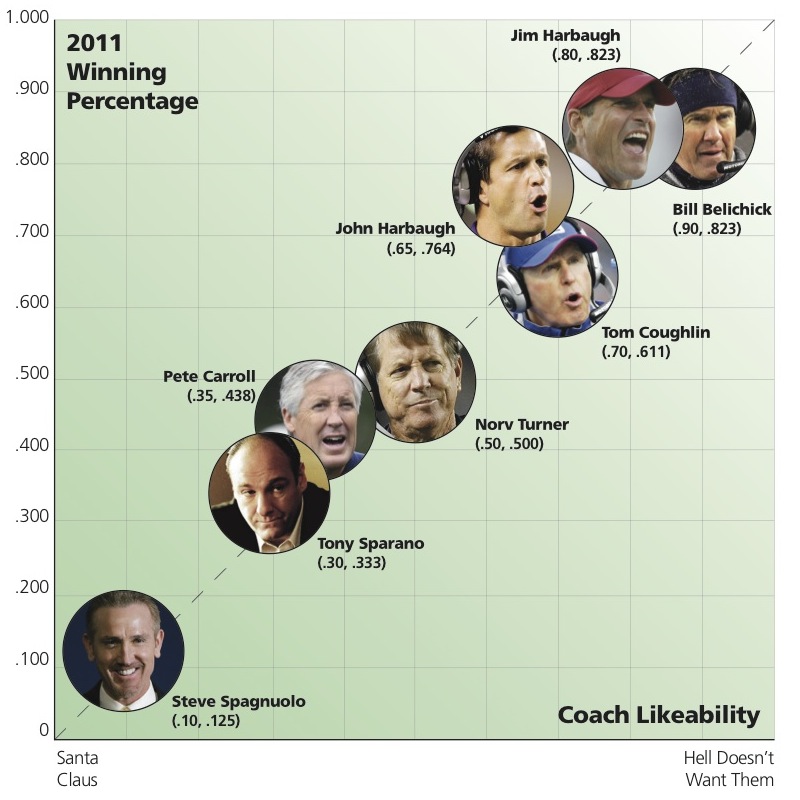By Jeffrey Carl

Bloggers To Be Named Later was Paul Caputo’s fabulous sports-blogging empire of the mid-2010s. My role in the enterprise was to promise to write humor articles and then not do that, or at least not remotely on time. Ultimately, after a flirtation with viral Internets fame, the site basically turned into an excuse for Paul to get free baseball tickets, which is actually about the only good reason to run a blog of any sort. After the BTBNL site wound down, I realized that I hadn’t kept local copies of most of the stories I had written, so I ended up scouring through The Internet Archive to find as many as I could in order to prevent a tragic loss to the world’s cultural canon of blog posts complaining about the Seattle Mariners. You’re welcome.
Last week, we introduced the first truly solid, mathematically proven theory that finally takes the guesswork out of determining a NFL team’s success. The Belichick Inverse Likability Theorem simply states:

In Part 1 of this series, the theory’s startling accuracy was demonstrated using the records of NFL coaches in 2011. “But how does it hold up over time?” you ask.
To prove just how deeply I deserve a NFL Nerdy Math Thing award, I will inconvenience myself to show you that the “BILT” shows itself true throughout NFL history as well. Let’s start with some of the all-time NFL standout coaches for one reason or another:
- Vince Lombardi (.739 career winning percentage, 7 NFL championships): Packers Guard Jerry Kramer once joked, “Lombardi treated us all the same, like dogs.” That seemed funny until after a bad game in 1966 he outright sold RB Paul Hornung to a shady Korean restaurant.
- Tom Landry (.602 career winning percentage, 2 NFL championships): Stabbed “Dandy” Don Meredith in the kidney for touching his fedora, ending Meredith’s career. Set NFL record for consecutive games never showing human emotions, which stood until Belichick beat it in 2010.
- Marty Schottenheimer (.595 career winning percentage, 0 NFL championships): Best known for his infuriatingly conservative (“one yard and a cloud of dust”) playcalling style, his shockingly blatant nepotism, and his occasional attempts to hire ninja assassins to kill John Elway in revenge for repeated playoff losses. Earns back a few likability points for coaching the UFL Virginia Destroyers to a championship – unlike the Browns, Chiefs or Redskins.
- Buddy Ryan (.500 career winning percentage, 0 championships): May or may not have put bounties on opposing players and/or punched assistant coaches on the sideline. Nonetheless gets likability points for being pure bats**t crazy enough to enjoy watching (see also Ryan, Rex).

- Steve Spurrier (.375 career winning percentage, 0 championships): Okay, so maybe putting all your chips on Danny Wuerffel as your quarterback and resigning your coaching job from the 8thhole of a golf course aren’t Hall of Fame qualifiers. But the Old Ball Coach (“OBC”) never failed to amuse fans or reporters at his comically inept press conferences, and his bold, fashion-forward sense for womens’ golf visors made him a standout in likability.
- Joe Bugel (.300 career winning percentage, 0 championships): Absolutely everybody loved “Buges,” a players’ coach and two-time Super Bowl winning assistant with the Redskins who proceeded to win approximately negative 1 zillion games as the head coach of the Cardinals and Raiders.

John Madden (.759 career winning percentage, 1 championship): John Madden was a great coach and better commentator, but he gets +.500 unlikability points for willingly putting his name on the last several “Madden NFL” video games. Anyone who accepts money in return for using their name to pimp this chronically over-rated annual series of $60 roster updates has basically abdicated their rights to enter the Kingdom of Heaven when they die.
So let’s see where that all nets out:

“Okay,” you may be saying, “but what about the nice guys who were big winners?” Technically, it is true that several seemingly likable people were coaches with Hall of Fame winning percentages. But when you look at them closer, you will find the IBT holds true:

- Joe Gibbs: Joe Gibbs is widely viewed as the archetypal “nice guy” coach and all-around decent human being. But he had two distinct phases of his coaching career:
- Joe Gibbs Part II (.468 career winning percentage, 0 championships): During the kind grandfatherly years of his second turn with the Redskins, Gibbs had the highest-paid coaching staff in football and managed only a 30-34 record with a single playoff win. Note that as with John Madden above, coaching for a d-bag owner does not improve a coach’s winning percentage under the Belichick Inverse Likability Theorem.
- Joe Gibbs Part I (.648 career winning percentage, 3 championships): During his first tenure as Redskins coach, Gibbs was the dominant coach of his era but was secretly a rabid sympathizer of the Viet Cong, despite the fact that the war had been over for many years.

- Dick Vermeil: Vermeil is famous for having changed his style from angry and heartless during his days in Philadelphia to warm, emotional and sentimental during his return to coaching in St. Louis when he won a Super Bowl. But Vermeil also had distinct phases to his hallowed coaching career:
- Dick Vermeil Part I (.641, 0 champships): During his ultra-Type A years in Philadelphia, Vermeil went to the playoffs four out of six years. He was known for his players hating his guts, and setting the Eagles’ all-time coaching high blood pressure record which was later broken by Andy Reid only with the help of more than 35,000 McNuggets.
- Dick Vermeil Part II “Electric Boogaloo” (.49, 1 championship): Despite Vermeil’s heartwarming yet off-putting crying jag during the Super Bowl, his winning percentage during his tenure in St. Louis was only .458 in the regular season and he racked up 10+ losses two out of three seasons with the Rams. He would have gotten fired if Kurt Warner hadn’t paid Tonya Harding with a ton of crystal meth to dress up as Houston Texans tackle Travis Johnson and cripple Trent Green.

Tony Dungy (.651, 1 championship): Dungy is widely known for his avuncular TV style, strong religious faith and commitment to charities promoting involved and caring fathership. But I’m just adding +.600 unlikability to Dungy for “having a weird-shaped head” so that it fits my theory.
Author’s math-y science words note: Many people who are not expert science-y people like me are unaware that a large portion of science is specifically related to assessing the shape of people’s heads and modifying mathematical formulas based on this information. You are now a more educated person. You’re welcome.
So with this additional historical data, how does the Belichick Inverse Likability Theorem hold up?

As the chart above shows, “pretty darn well.”
In the next part of the series, we will apply the Belichick Inverse Likability Theorem to college football and literallyblow your mind. No, really, I mean “literally.” As in if you read it, you will die. If that doesn’t encourage future readership of this blog, I’m really not sure what does.






